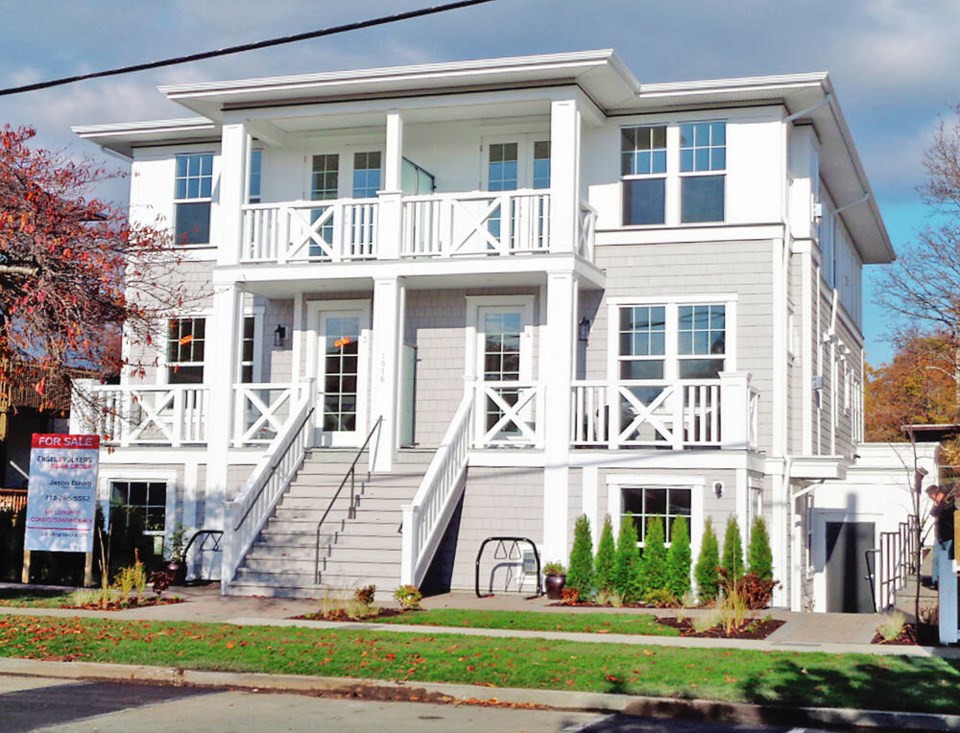Update: Saying it would not be good governance to extend deliberations over the missing-middle housing initiative into a Friday evening before a long weekend, Victoria council voted to adjourn debate until the next regular council meeting Sept. 8.
- - -
Earlier story:
A verdict on the City of Victoria’s missing middle housing initiative has been put off until at least Friday afternoon.
Following a six-hour public hearing Thursday night, which was itself an extension of one that started in August, council decided it would deliberate and render a decision this afternoon after re-convening at noon.
Council wrapped up the public hearing at 12:30 a.m. this morning after hearing from about 50 speakers.
When councillors meet again this afternoon, they will review all videos submitted by concerned residents who want to weigh in on the issue. They will then debate the initiative and make a decision, which could include enacting the reimagining of housing policy in the city, scrapping the middle-housing proposal, sending it back to staff to be changed, or putting off a decision until after the October election.
At the Thursday night public hearing, the missing-middle-housing debaate picked up where it left off in early August — with a city divided.
The public hearing into the initiative, which had been adjourned in August due to the sheer number of people wanting to weigh in on it, started again with another long line of residents wanting to have their say.
And just like a month ago, when the hearing lasted 4½ hours, opinions were split between urging council to either enact the program, drop it entirely, or set it aside for the next council to tackle after the Oct. 15 election.
Missing-middle advocates believe the initiative will increase the number of housing options in the hope more families will be able to stay in the city, while ensuring new development suits the character of neighbourhoods.
The program would require amending bylaws, land-use procedures and official community plans to permit infill, houseplexes and corner townhouses in some neighbourhoods — basically, where zoning currently only allows for single-family homes it would allow houseplexes as well as townhouse projects on assembled land.
The initiative also recommends allowing city staff to approve permits for projects that comply with all design guidelines and zoning, in hopes the time saved by not requiring council approval would reduce costs for consumers.
The initiative has clearly split the city, and the public meeting was again split down the middle between those in favour and against.
Thursday night, those against once again suggested it’s a flawed program that misses the mark and does nothing to improve affordability, could kill green space and displace renters as older homes with suites could be demolished to make way for large houseplexes.
Others against the program argued it would hand developers, who no longer would require rezoning approval to demolish and rebuild on single-family lots, carte blanche to build what they want, forever altering neighbourhoods.
One resident argued good intentions can lead to unintended consequences, and while it is laudable the council wants to tackle a shortage in housing, missing middle will create irreversible changes that could destroy century-old neighbourhoods.
He said rather than scar older neighbourhoods, the city should start by adding housing stock near heavy traffic routes and encourage developers to build infill houses.
Many of those speaking in favour of missing-middle housing were younger residents, who said they are frustrated by the lack of housing options.
Some acknowledged the missing middle will not provide affordable units, but they suggested it will create units that current renters will move to freeing up more affordable suites.
One young family noted it’s not a quick fix, but would be a good step and a powerful tool to show council is intent on tackling the housing shortage.
“Doing nothing certainly will not help bring the prices down and we can’t afford to wait much longer. The current housing crisis intersects with the impending climate change catastrophe, so this could be an important part of a holistic approach to our woes,” said Gabriel Alenko-Linden in a letter to council. “No more suburbs and sprawl that are draining public resources and destroying the environment. No more bending to the will of the select few elitists sitting on their hoarded wealth.”
In another letter to council, 26-year-old Charlotte Collens wrote that the housing shortage “has robbed me of a community, of stability and the ability to put down any type of roots.”
“More middle housing would alleviate some of the pressure of the housing crisis. It wouldn’t ‘wreck the character of the neighbourhood,’ it would improve it, it would allow my generation to own homes, build community, put down roots, have families if they wanted, which is everything we’re being denied right now because some people don’t want duplexes beside them,” she said.
>>> To comment on this article, write a letter to the editor: [email protected]



